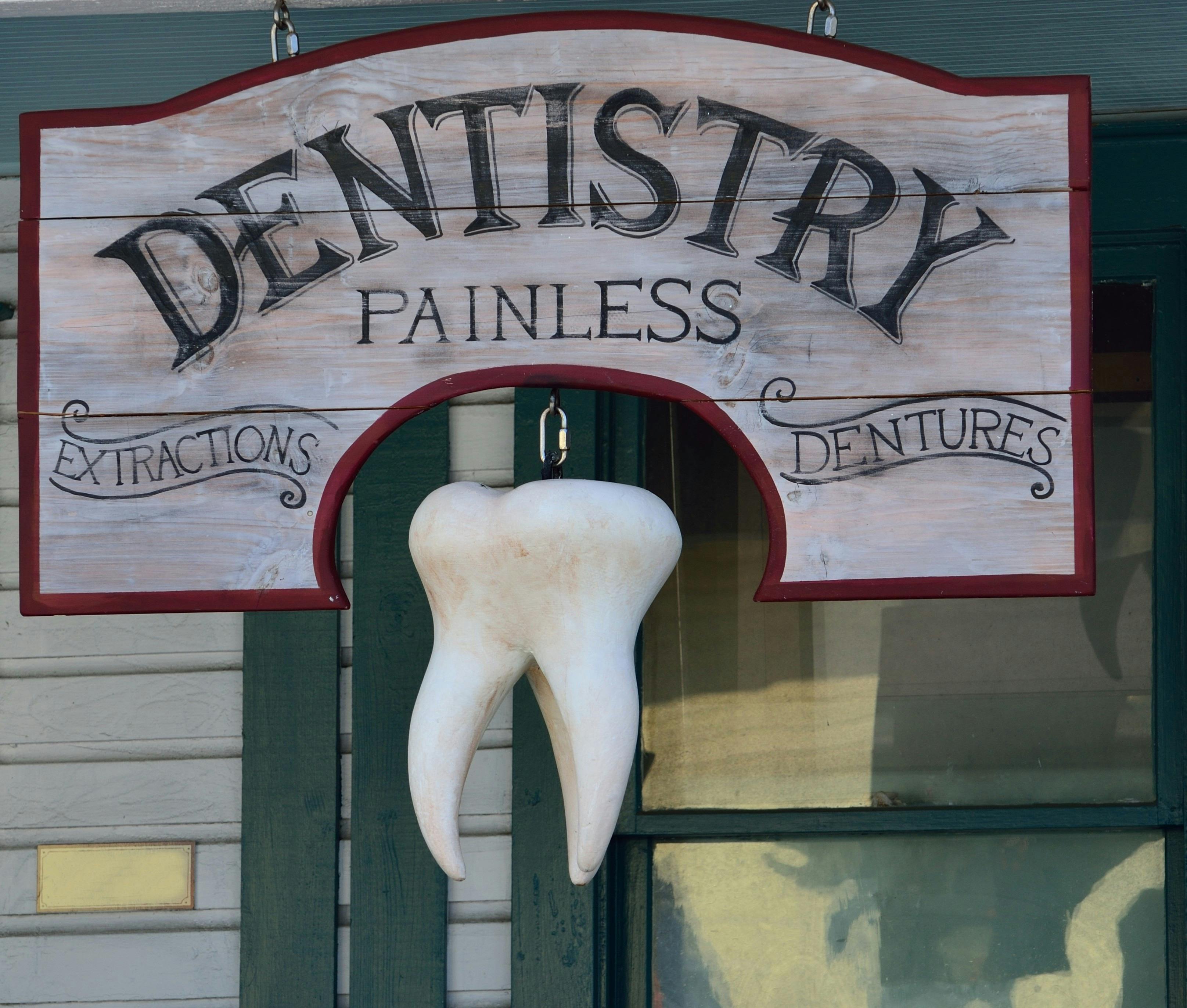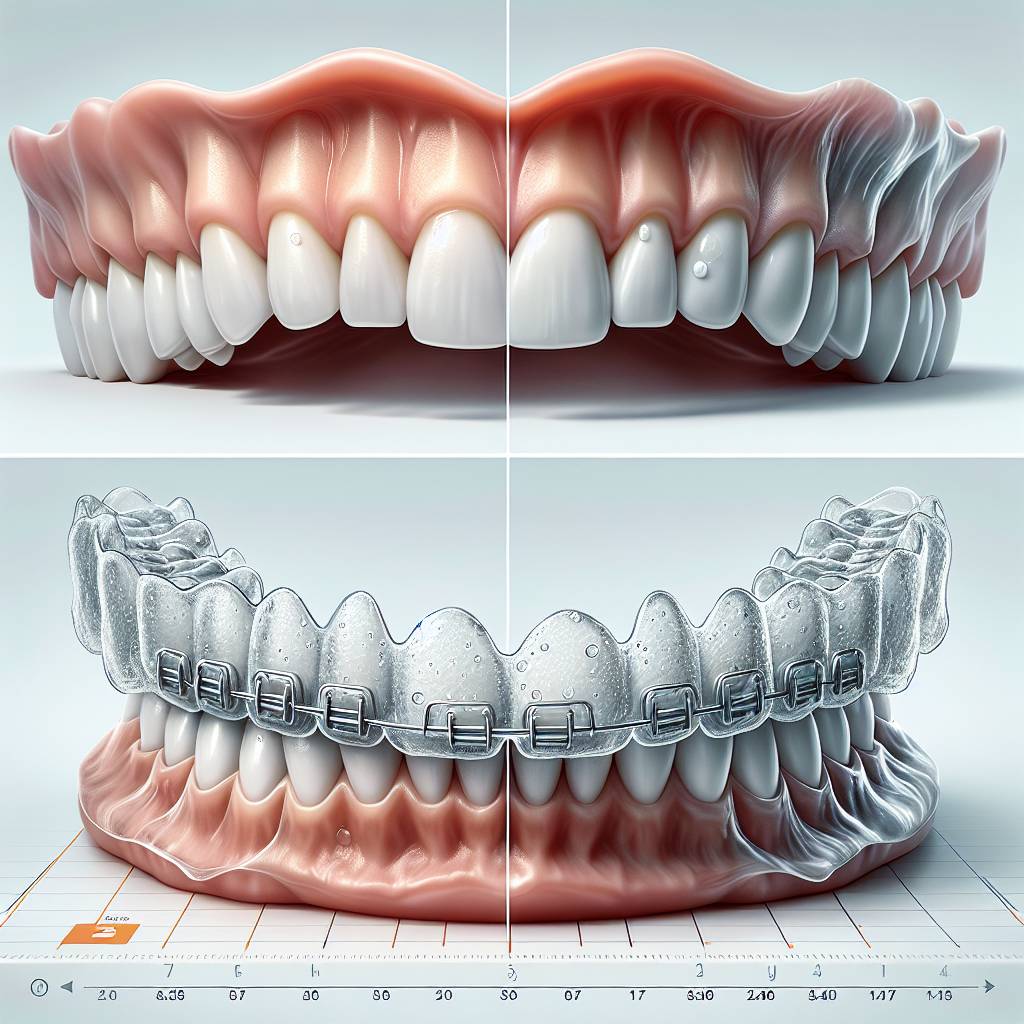Teeth aligners are an increasingly popular choice for straightening teeth. But how long do they take to work? It’s natural to want to know if you can expect quick results from using them. In this article, we’ll go over how long it usually takes for teeth aligners to produce noticeable results, as well as what factors may affect the timeline.The timeframe for teeth aligners to work depends on the severity of the misalignment and can range from 6 months to 24 months. Generally, mild to moderate misalignments can be corrected in 6-12 months while more severe cases may take 12-24 months.
How Long Does It Take Teeth Aligners To Straighten Teeth?
The amount of time it takes for teeth aligners to straighten teeth depends on several factors, such as the severity of the misalignment, the type of aligners used, and how consistently they are worn. Generally speaking, most teeth straightening treatments with aligners take between six and 18 months to complete. However, some mild cases may be treated in as little as three months.
Invisalign® is one of the most popular types of teeth aligners and can typically take between nine and 15 months to straighten teeth. Traditional braces usually take between 12 and 18 months to complete treatment. Other types of aligners, such as clear braces or lingual braces, may take slightly longer than traditional braces due to their complexity.
Patients should also factor in additional time for orthodontic visits with their dentist or orthodontist during treatment. During these visits, dentists will monitor progress and make any necessary adjustments to the aligners or other orthodontic appliances that are being used.
It is important for patients to follow their dentist’s instructions carefully throughout treatment in order to ensure optimal results in a timely manner. This includes wearing the aligners for at least 22 hours per day as well as avoiding any activities that could damage them such as eating hard foods or smoking cigarettes.
Overall, it is difficult to predict exactly how long it will take for a patient’s teeth straightening treatment with aligners to be completed, but most cases take between six to 18 months depending on the severity of misalignment and other factors such as patient compliance.
What Factors Affect The Duration Of Teeth Aligners Treatment?
The duration of teeth aligners treatment depends on a few factors, including the severity of the misalignment, the type of treatment being used, and the individual patient’s compliance to wearing the aligner trays. The more severe the misalignment is, the longer it will take to achieve desired results. In cases where teeth misalignment is severe, multiple sets of aligners may be used and they must be worn for a longer period of time.
The type of treatment being used also affects treatment duration. Traditional metal braces can take up to two years to achieve desired results, while clear plastic aligners may take less time. Invisalign®, a popular brand of clear plastic aligner trays, generally requires 20-30 sets and takes between 6 and 18 months for full correction.
Another factor that affects treatment duration is patient compliance. If a patient does not wear their aligner trays as instructed by their orthodontist or dentist, it will affect how long it takes for teeth to be fully corrected. Aligner trays must be worn at least 20 hours per day in order for them to effectively move teeth into proper alignment. If any set is not worn long enough or often enough, treatment duration will be extended until all sets are used correctly.
For patients looking to shorten treatment duration, many orthodontic practices offer accelerated options such as Propel® or Acceledent® that use vibrations or gentle pressure to move teeth more quickly than traditional treatments. While these methods can help speed up the process, they cannot shorten treatment beyond what is medically necessary for full correction.
In summary, there are many factors that affect how long it takes for teeth alignment treatments with aligners to work effectively and achieve desired results. These include severity of misalignment, type of treatment being used, and patient compliance with wearing their aligner trays as prescribed by their orthodontist or dentist.
The Benefits of Wearing Teeth Aligners
Teeth aligners are becoming an increasingly popular option for those looking to improve the appearance of their smile. Teeth aligners can be used to straighten crooked teeth, close gaps, and even correct minor bite issues. Wearing teeth aligners has a variety of benefits that make it a great choice for those looking to improve their dental health and aesthetics.
One of the biggest benefits to wearing teeth aligners is that they are much more discreet than traditional braces. Traditional braces are visible to everyone, but with teeth aligners, you can have a straight smile without anyone being the wiser. This makes them a great option for adults who don’t want to draw attention to their dental health issues.
Another benefit to wearing teeth aligners is that they are more comfortable than traditional braces. Traditional braces can be very uncomfortable due to all the metal wires and brackets, but with teeth aligners you don’t have any of those irritations. They also don’t get in the way when eating or talking like traditional braces can.
Another great benefit of wearing teeth aligners is that they don’t require frequent trips to the orthodontist like traditional braces do. With traditional braces, you typically need to visit your orthodontist every few weeks in order for them to make adjustments and check your progress. With teeth aligners, however, you only need to visit about once every 6-8 weeks or whenever you receive your new set of aligners.
Finally, another great benefit of wearing teeth aligners is that they usually take less time than traditional braces do in order to achieve results. Depending on your specific needs and individual alignment goals, most people can expect results within 6-18 months with properly worn teeth aligners while traditional braces often take longer.
Overall, there are many benefits associated with wearing teeth aligners over traditional braces when it comes to achieving straighter and healthier smiles faster and more discreetly.
Which Type Of Teeth Aligners Should Be Used For Faster Results?
When it comes to teeth alignment, the choice of aligner can determine how quickly the desired result is achieved. Clear aligners are one of the most popular and effective methods of teeth alignment, and they are available in a variety of styles. Invisalign and SureSmile are two of the most popular types of aligners that can be used to achieve faster results.
Invisalign is a type of clear aligner that uses 3D imaging technology to create custom-fit trays for each patient’s mouth. These trays are designed to provide a precise fit, and they use a series of small steps to gradually move the teeth into their desired position. Invisalign is very comfortable to wear, and it typically takes between six and eighteen months for full results to be achieved.
SureSmile is another type of clear aligner that uses advanced imaging technology to map out a precise treatment plan for each patient. The SureSmile system also incorporates custom-fit trays that are designed to provide maximum comfort, as well as an archwire that helps guide the teeth into their desired position. This system typically produces results in as little as three months with fewer office visits than other types of treatment plans.
Both Invisalign and SureSmile offer patients fast results when it comes to teeth alignment, but it’s important for patients to discuss their options with their dentist before making any decisions about which type of aligner they should use. The dentist can help determine which type of aligner will be most effective for each individual’s needs, as well as provide guidance on how long it will take for full results to be achieved.

Success Rates of Teeth Aligners
Teeth aligners are an increasingly popular option for straightening teeth without the use of traditional braces. They offer many advantages over traditional braces, including being nearly undetectable and being easily removable for eating and cleaning. But how successful are teeth aligners in achieving the desired results?
The success rate of teeth aligners depends on several factors, including the severity of the misalignment, the patient’s age, and the specific type of teeth aligner being used. Generally speaking, most patients can expect to achieve satisfactory results with teeth aligners within 6 to 18 months. Studies have shown that if patients follow their dentist’s instructions and wear their aligners as directed, they can expect a success rate of up to 95%.
Patients should also be aware that some cases may be more complex and require more time or specialized treatment to achieve desired results. For example, severe misalignments may require more than one type of treatment and may take longer than 18 months to correct. In these cases, it is important to consult with a dentist to determine the best course of action.
In addition to patient compliance and following instructions, another factor that can influence success rates is the quality of the aligner itself. Poorly made or ill-fitting teeth aligners can lead to discomfort and difficulty achieving desired results. It is important for patients to seek out a qualified dental professional who specializes in teeth alignment treatments when considering this option.
Overall, teeth aligners are an effective method for straightening teeth with relatively high success rates when used correctly and with proper care. With proper maintenance and care from a qualified dental professional, patients can expect satisfactory results within 6-18 months in most cases.
Are There Any Side Effects Of Wearing Teeth Aligners?
Wearing teeth aligners is a great way to straighten your teeth and improve your smile. However, it is important to be aware of any potential side effects that come with wearing them. Generally speaking, there are few side effects associated with wearing teeth aligners, and most of them are minor.
The most common side effect of wearing teeth aligners is soreness in the mouth and gums. This is usually caused by the aligners pressing against the gums and teeth as they move them into their correct positions. The soreness should subside after a few days, but if it persists you should speak to your dentist about adjusting the fit of your aligners.
Another possible side effect of wearing aligners is increased salivation. This usually happens when the aligner presses against an area near the salivary glands, causing them to produce more saliva than normal. This should resolve itself once you become accustomed to wearing the aligner, and can be managed by drinking plenty of fluids during the day.
It is also possible that you may experience some minor discomfort when speaking or eating while wearing an aligner. This is normal and should resolve itself within a few days as you become more accustomed to having the aligner in your mouth. If it persists after several days, then you should speak to your dentist about adjusting the fit of your appliance accordingly.
Finally, some people may find that their lips become dry or chapped while wearing an aligner due to constant friction against them from the appliance. To prevent this from happening, make sure that you moisturize your lips regularly throughout treatment and use a lip balm or chapstick if necessary.
Overall, there are few side effects associated with wearing teeth aligners; however, it is important to be aware of any potential issues so that they can be addressed quickly if necessary. If you have any concerns about side effects or other issues related to your treatment plan, make sure to speak with your dentist for more information and guidance on how best to manage them.
Comfort
Patients should ensure that their teeth aligners provide a comfortable fit. If the aligners are too tight, this could cause discomfort and even damage to the gums and teeth. Patients should check the fit of their aligners regularly, and if they feel any sort of discomfort, they should consult their orthodontist for further advice.
Cleaning and Care
It is important for patients to keep their teeth aligners clean and free from debris. Patients should brush their teeth before putting on the aligner to ensure that there is no food trapped between the teeth or underneath the tray. They should also brush the aligner itself so that it does not become discolored or cloudy from use. Additionally, patients should avoid sleeping in their aligners as this can lead to decay or bacteria buildup which could cause an infection in the mouth.
Wearing Time
Patients should wear their teeth aligners for at least 22 hours a day in order to achieve optimal results. They should also remember to take out the aligner when eating and drinking so that food particles do not become trapped underneath it. Additionally, patients should only remove the aligner when it is necessary and replace it promptly after use in order to maintain progress with treatment.
Follow Up Visits
It is important for patients to attend all follow up visits with their orthodontist in order to ensure optimal results with teeth alignment treatment. During these visits, the orthodontist will assess progress and make any adjustments necessary for continued success with treatment. Additionally, these visits provide an opportunity for patients to ask questions about their treatment plan and address any concerns they may have about their progress with alignment therapy

Conclusion
Overall, teeth aligners can be an effective and convenient way to straighten your teeth. Generally, they take around 6 to 18 months to work, but this timeline can be shortened with additional treatments like Propel. The process is easy and relatively painless, and the results are usually long-lasting. However, it’s important to keep up with regular checkups and cleanings since the aligners can cause an increased risk of dental decay. If you’re considering teeth aligners, it’s best to consult with a dentist or orthodontist so that they can provide you with personalized advice about the best treatment for your particular situation.
It’s also important to understand that teeth aligners require dedication and commitment from their users in order to achieve the desired results. With consistent use of the aligners as prescribed by your doctor, you can expect an improved smile in as little as 6 months or less. It’s a worthwhile investment of time and money that can have a positive impact on your life for years to come.

